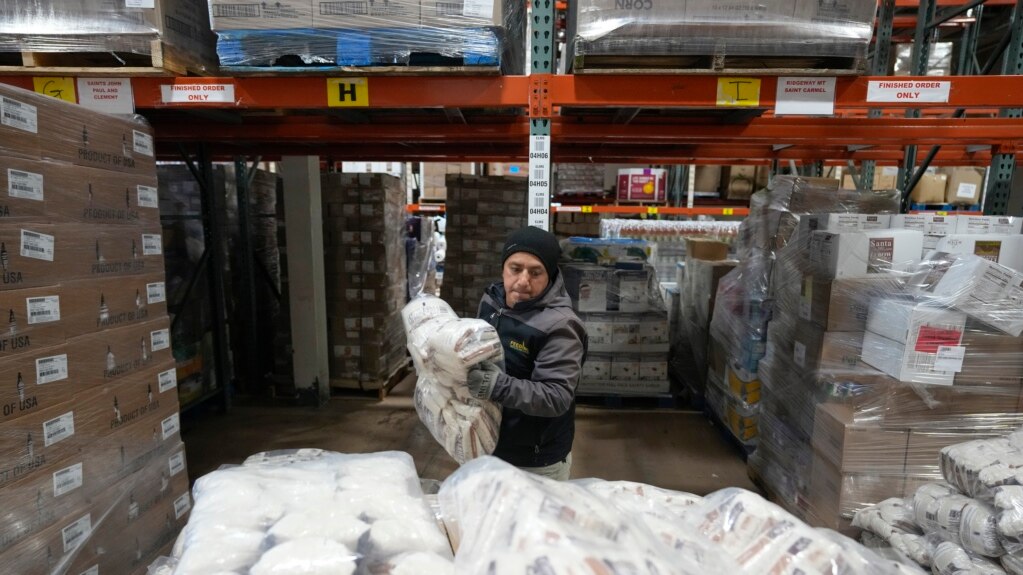When Sean Rafferty first worked in a food store 40 years ago, anything that was not sold got thrown out.
But on a recent day at his store near the New York City area, he was preparing boxes of bread, vegetables, and milk products to be picked up by a food bank. It is part of a program in New York State requiring larger businesses to donate food, and, if possible, reusing small, leftover pieces of food.
New York is among a growing number of states trying to limit food waste. They are concerned that it is taking up space in landfills and adding to global warming. A landfill is a place for putting garbage.
Food waste including meat and vegetables releases methane gas after being put in a landfill. And saving unwanted food helps to feed hungry families.
Worldwide, about a third of food is wasted. In the United States, it is 40 percent. The U.S. spends about $218 billion each year growing and producing food that is wasted. About 57 million metric tons goes to waste, including 47.5 million metric tons that ends up in landfills.
“What’s shocking to people often is not only how much we waste ... but also the impact," said Emily Broad Leib. She is a Harvard University professor and director of the school's Food Law and Policy Clinic. "Food waste causes about 8 percent to 10 percent of global greenhouse gas emissions.”
In 2015, the U.S. Department of Agriculture and the Environmental Protection Agency announced a goal of 50 percent food waste reduction by 2030.
That has led to a number of state government efforts, along with smaller, nonprofit efforts.
Ten American states and Washington, D.C. have passed legislation or created policies to reduce, compost or donate waste.
The states of California and Vermont have programs for turning people’s food waste into compost or energy. Connecticut requires businesses, including larger food sellers and supermarkets, to reuse food waste. Farmers in Maryland can get a tax credit of up to $5,000 per farm for food they donate.
Several states have joined New York in creating systems for food donation. Rhode Island requires food sellers servicing schools and universities to donate any unused food to food banks. And Massachusetts limits the amount of food that businesses can send to landfills.
As of late October, New York had sent 2.3 million kilograms of food, about 4 million meals, through its Feeding New York State program. The program supports the state's 10 area food banks and is hoping to double that number next year.
“Certainly, we should be reducing the amount we waste to start with, but then we should be feeding people before we throw food away…” said Sally Rowland. She is with the New York Department of Environmental Conservation.
Despite New York's success, some worry not enough is being done to meet the 2030 goal. Broad Leib and others have called for a national effort to coordinate the various state and local policies.
Kathryn Bender is a University of Delaware assistant professor of economics. She said donation programs are helpful. But she worries they might put the responsibility on nonprofits, instead of businesses.
“The best solution for food waste is to not have it in the first place,” Bender said. “If we don't need to produce all that food, let's not put all the resources into producing that food.”
I’m Faith Pirlo.

